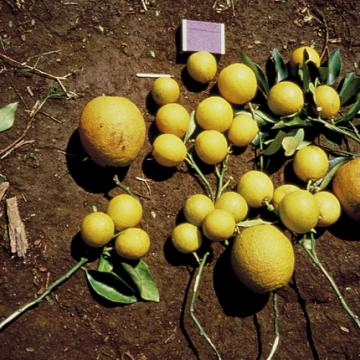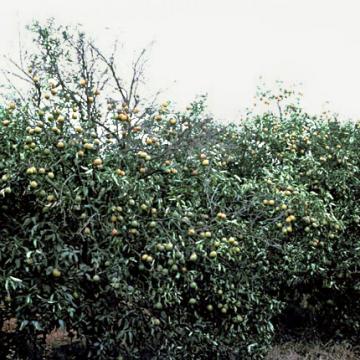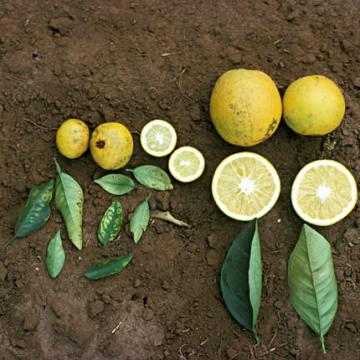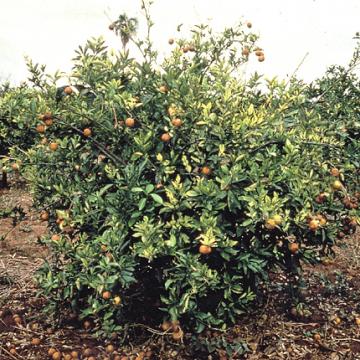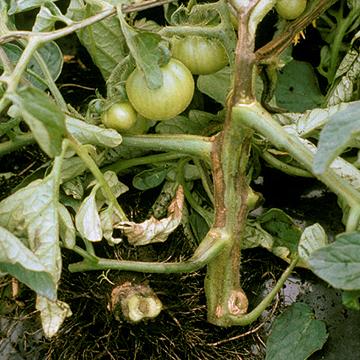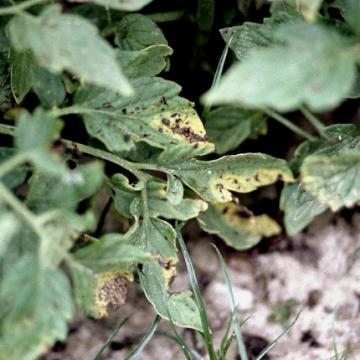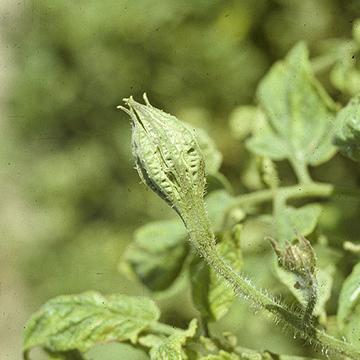DISEASE: Citrus variegated chlorosis
HOST: Citrus (Orange)
Small, hard, diseased fruit interspersed with three normal fruits for comparison. Diseased fruit often exhibit sunburn symptoms.
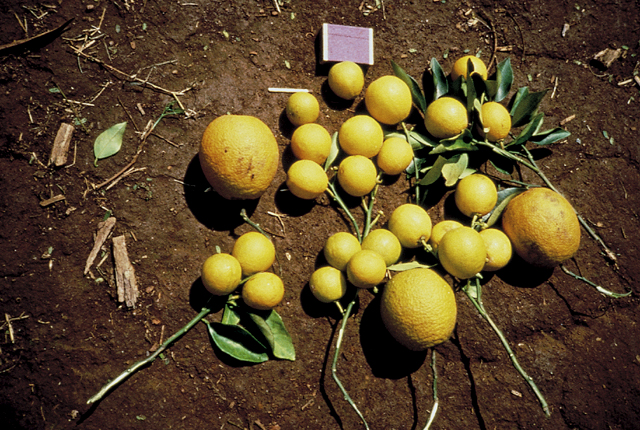
Citrus variegated chlorosis | Citrus (Orange)
DISEASE: Citrus variegated chlorosis
HOST: Citrus (Orange) (Citrus sinensis)
PATHOGEN: Xylella fastidiosa
SOURCE: M. J. G. Beretta
DISEASE: Citrus variegated chlorosis
HOST: Citrus (Orange)
Diseased tree with sparse foliage.
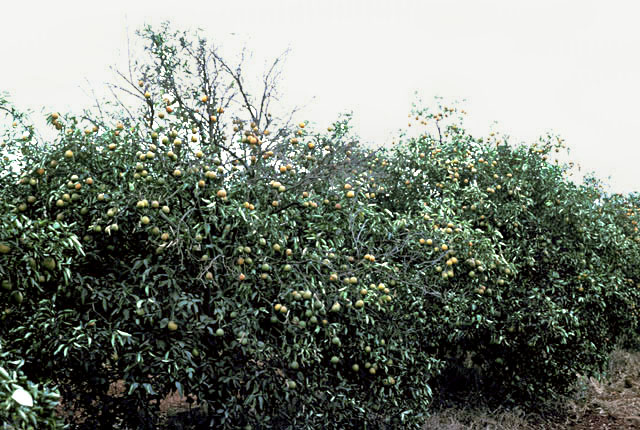
Citrus variegated chlorosis | Citrus (Orange)
DISEASE: Citrus variegated chlorosis
HOST: Citrus (Orange) (Citrus sinensis)
PATHOGEN: Xylella fastidiosa
SOURCE: S. Purcell
DISEASE: Citrus variegated chlorosis
HOST: Citrus (Orange)
Typical symptoms of the disease are discoloration of infected leaves, brown spots on lower sides of leaves, chlorosis on upper sides, and undersized fruit (left). Healthy fruit and leaves (right).
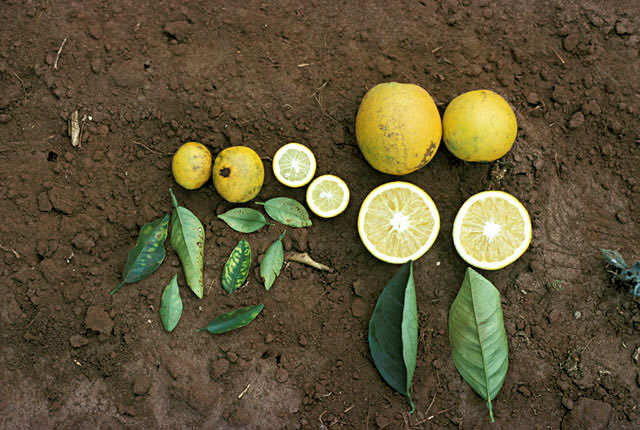
Citrus variegated chlorosis | Citrus (Orange)
DISEASE: Citrus variegated chlorosis
HOST: Citrus (Orange) (Citrus sinensis)
PATHOGEN: Xylella fastidiosa
SOURCE: S. Purcell
DISEASE: Citrus variegated chlorosis
HOST: Citrus (Orange)
Severely infected tree with typical stunting and chlorosis. Symptoms may appear on only one branch of the canopy.
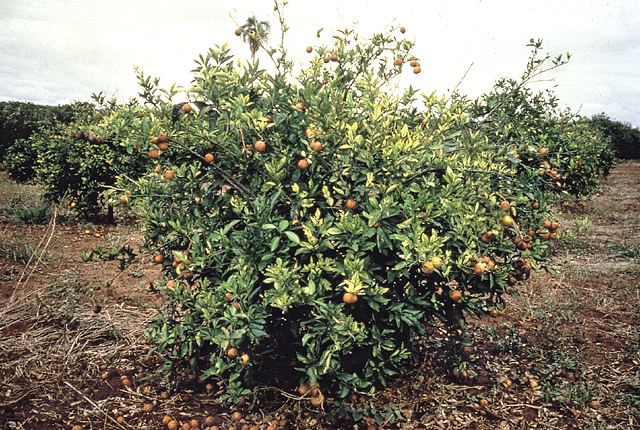
Citrus variegated chlorosis | Citrus (Orange)
DISEASE: Citrus variegated chlorosis
HOST: Citrus (Orange) (Citrus sinensis)
PATHOGEN: Xylella fastidiosa
SOURCE: M. J. G. Beretta
DISEASE: Pith necrosis
HOST: Tomato
Cracked, dry, hollow stems with internal necrosis.
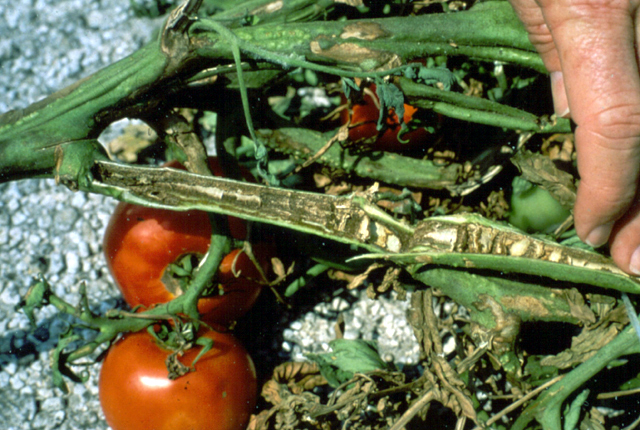
Pith necrosis | Tomato
DISEASE: Pith necrosis
HOST: Tomato (Lycopersicon esculentum)
PATHOGEN: Pseudomonas corrugata
SOURCE: A. Alvarez
DISEASE: Pith necrosis
HOST: Tomato
External necrotic stem tissues. Initial symptoms include chlorosis of young leaves. Wilting may occur when disease is severe.
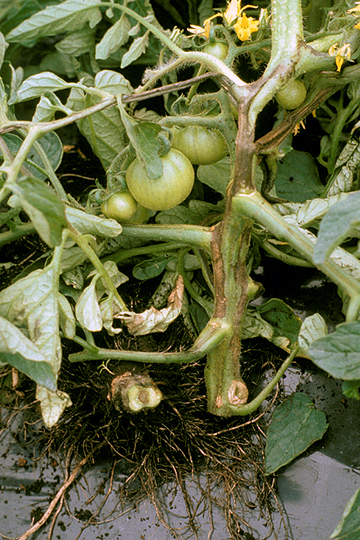
Pith necrosis | Tomato
DISEASE: Pith necrosis
HOST: Tomato (Lycopersicon esculentum)
PATHOGEN: Pseudomonas corrugata
SOURCE: K. Natsuaki, M. Goto
DISEASE: Syringae leaf spot
HOST: Tomato
Leaves with brown necrotic lesions and chlorotic margins. Symptoms vary greatly among cultivars. Some have black or brown lesions with bright yellow, chlorotic areas and others do not have yellowing.

Syringae leaf spot | Tomato
DISEASE: Syringae leaf spot
HOST: Tomato (Lycopersicon esculentum)
PATHOGEN: Pseudomonas syringae pv. syringae
SOURCE: R. Gitaitis
DISEASE: Tomato big bud
HOST: Tomato
Characteristic symptoms are swollen, apical stems and stunted leaves. Apical stems are generally thickened and assume a stiff and erect growth habit. Internodes are shortened and flower buds are greatly enlarged.
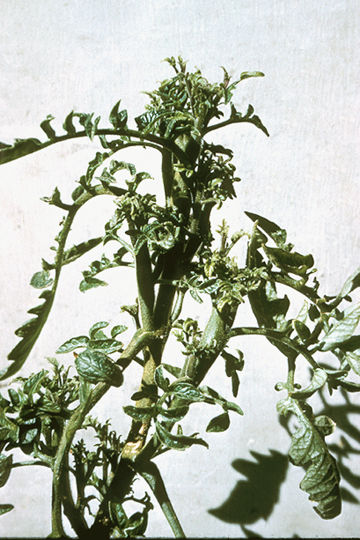
Tomato big bud | Tomato
DISEASE: Tomato big bud
HOST: Tomato (Lycopersicon esculentum)
PATHOGEN: 'Candidatus Phytoplasma asteris'
PATHOGEN SYNONYM: Phytoplasma Aster yellows group
SOURCE: D. Teakle
DISEASE: Tomato big bud
HOST: Tomato
Symptoms are enlarge sepals that do not separate. Flower buds stay green and do not develop into fruit. Leaves are small and chlorotic.
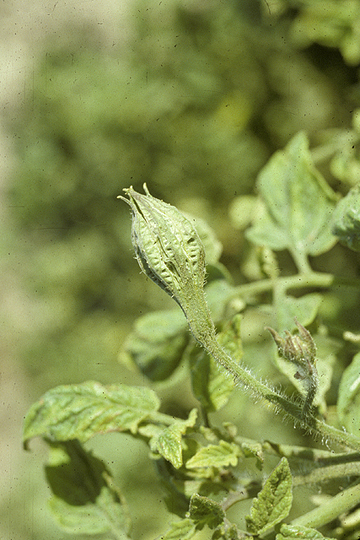
Tomato big bud | Tomato
DISEASE: Tomato big bud
HOST: Tomato (Lycopersicon esculentum)
PATHOGEN: 'Candidatus Phytoplasma asteris'
PATHOGEN SYNONYM: Phytoplasma Aster yellows group
SOURCE: S. Thomson


